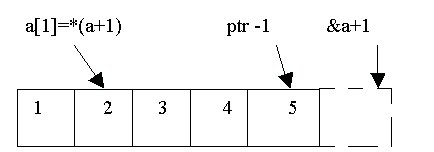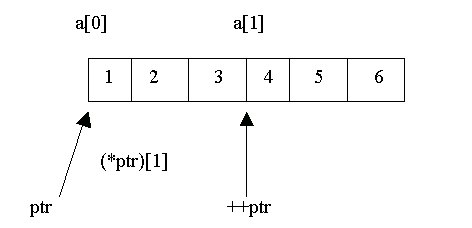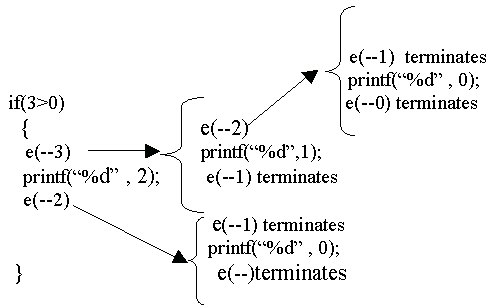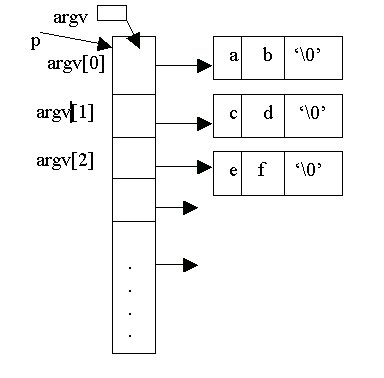考查初级嵌入式开发人员C基本功的16道题
发布时间:2010-1-3 08:14
发布者:李宽
|
非常基本关于C语言的问题,一个信息类(计算机,资讯工程,电子工程, 通信工程)专业的本科毕业生应该达到的水平,如果你有3道以上的题目不能答对,基本上我们都不好说什么了....题目不难,全部都能快速地答完,当然也需要一定的知识储备. 约定: 1) 下面的测试题中,认为所有必须的头文件都已经正确的包含了 2)数据类型 char 一个字节 1 byte int 两个字节 2 byte (16位系统,认为整型是2个字节) long int 四个字节 4 byte float 四个字节4 byet double 八个字节 8 byte long double 十个字节 10 byte pointer 两个字节 2 byte(注意,16位系统,地址总线只有16位) 第1题: 考查对volatile关键字的认识 #include static jmp_buf buf; main() { volatile int b; b =3; if(setjmp(buf)!=0) { printf("%d ", b); exit(0); } b=5; longjmp(buf , 1); } 请问,这段程序的输出是 (a) 3 (b) 5 (c) 0 (d) 以上均不是 第2题:考查类型转换 main() { struct node { int a; int b; int c; }; struct node s= { 3, 5,6 }; struct node *pt = &s; printf("%d" , *(int*)pt); } 这段程序的输出是: (a) 3 (b) 5 (c) 6 (d) 7 第3题:考查递归调用 int foo ( int x , int n) { int val; val =1; if (n>0) { if (n%2 == 1) val = val *x; val = val * foo(x*x , n/2); } return val; } 这段代码对x和n完成什么样的功能(操作)? (a) xn (b) x*n (c) nx (d) 以上均不是 第4题:考查指针 main() { int a[5] = {1,2,3,4,5}; int *ptr = (int*)(&a+1); printf("%d %d" , *(a+1), *(ptr-1) ); } 这段程序的输出是: (a) 2 2 (b) 2 1 (c) 2 5 (d) 以上均不是 第5题:考查多维数组与指针 void foo(int [][3] ); main() { int a [3][3]= { { 1,2,3} , { 4,5,6},{7,8,9}}; foo(a); printf("%d" , a[2][1]); } void foo( int b[][3]) { ++ b; b[1][1] =9; } 这段程序的输出是: (a) 8 (b) 9 (c) 7 (d)以上均不对 第6题目:考查逗号表达式 main() { int a, b,c, d; a=3; b=5; c=a,b; d=(a,b); printf("c=%d" ,c); printf("d=%d" ,d); } 这段程序的输出是: (a) c=3 d=3 (b) c=5 d=3 (c) c=3 d=5 (d) c=5 d=5 第7题:考查指针数组 main() { int a[][3] = { 1,2,3 ,4,5,6}; int (*ptr)[3] =a; printf("%d %d " ,(*ptr)[1], (*ptr)[2] ); ++ptr; printf("%d %d" ,(*ptr)[1], (*ptr)[2] ); } 这段程序的输出是: (a) 2 3 5 6 (b) 2 3 4 5 (c) 4 5 0 0 (d) 以上均不对 第8题:考查函数指针 int *f1(void) { int x =10; return(&x); } int *f2(void) { int*ptr; *ptr =10; return ptr; } int *f3(void) { int *ptr; ptr=(int*) malloc(sizeof(int)); return ptr; } 上面这3个函数哪一个最可能引起指针方面的问题 (a) 只有 f3 (b) 只有f1 and f3 (c) 只有f1 and f2 (d) f1 , f2 ,f3 第9题:考查自加操作(++) main() { int i=3; int j; j = sizeof(++i+ ++i); printf("i=%d j=%d", i ,j); } 这段程序的输出是: (a) i=4 j=2 (b) i=3 j=2 (c) i=3 j=4 (d) i=3 j=6 第10题:考查形式参数,实际参数,指针和数组 void f1(int *, int); void f2(int *, int); void(*p[2]) ( int *, int); main() { int a; int b; p[0] = f1; p[1] = f2; a=3; b=5; p[0](&a , b); printf("%d\t %d\t" , a ,b); p[1](&a , b); printf("%d\t %d\t" , a ,b); } void f1( int* p , int q) { int tmp; tmp =*p; *p = q; q= tmp; } void f2( int* p , int q) { int tmp; tmp =*p; *p = q; q= tmp; } 这段程序的输出是: (a) 5 5 5 5 (b) 3 5 3 5 (c) 5 3 5 3 (d) 3 3 3 3 第11题:考查自减操作(--) void e(int ); main() { int a; a=3; e(a); } void e(int n) { if(n>0) { e(--n); printf("%d" , n); e(--n); } } 这段程序的输出是: (a) 0 1 2 0 (b) 0 1 2 1 (c) 1 2 0 1 (d) 0 2 1 1 第12题:考查typedef类型定义,函数指针 typedef int (*test) ( float * , float*) test tmp; tmp 的类型是 (a) 函数的指针,该函数以 两个指向浮点数(float)的指针(pointer)作为参数(arguments) Pointer to function of having two arguments that is pointer to float (b) 整型 (c) 函数的指针,该函数以 两个指向浮点数(float)的指针(pointer)作为参数(arguments),并且函数的返回值类型是整型 Pointer to function having two argument that is pointer to float and return int (d) 以上都不是 第13题:数组与指针的区别与联系 main() { char *p; char buf[10] ={ 1,2,3,4,5,6,9,8}; p = (buf+1)[5]; printf("%d" , p); } 这段程序的输出是: (a) 5 (b) 6 (c) 9 (d) 以上都不对 第14题: 考查指针数组的指针 Void f(char**); main() { char * argv[] = { "ab" ,"cd" , "ef" ,"gh", "ij" ,"kl" }; f( argv ); } void f( char **p ) { char* t; t= (p+= sizeof(int))[-1]; printf( "%s" , t); } 这段程序的输出是: (a) ab (b) cd (c) ef (d) gh 第15题:此题考查的是C的变长参数,就像标准函数库里printf()那样,这个话题一般国内大学课堂是不会讲到的,不会也情有可原呵呵, #include int ripple ( int , ...); main() { int num; num = ripple ( 3, 5,7); printf( " %d" , num); } int ripple (int n, ...) { int i , j; int k; va_list p; k= 0; j = 1; va_start( p , n); for (; j i = va_arg( p , int); for (; i; i &=i-1 ) ++k; } return k; } 这段程序的输出是: (a) 7 (b) 6 (c) 5 (d) 3 第16题:考查静态变量的知识 int counter (int i) { static int count =0; count = count +i; return (count ); } main() { int i , j; for (i=0; i <=5; i++) j = counter(i); } 本程序执行到最后,j的值是: (a) 10 (b) 15 (c) 6 (d) 7 详细参考答案 第1题: (b) volatile字面意思是易于挥发的。这个关键字来描述一个变量时,意味着 给该变量赋值(写入)之后,马上再读取,写入的值与读取的值可能不一样,所以说它"容易挥发"的。 这是因为这个变量可能一个寄存器,直接与外部设备相连,你写入之后,该寄存器也有可能被外部设备的写操作所改变;或者,该变量被一个中断程序,或另一个进程 改变了. volatile variable isn't affected by the optimization. Its value after the longjump is the last value variable assumed. b last value is 5 hence 5 is printed. setjmp : Sets up for nonlocal goto /* setjmp.h*/ Stores context information such as register values so that the lomgjmp function can return control to the statement following the one calling setjmp.Returns 0 when it is initially called. Lonjjmp: longjmp Performs nonlocal goto /* setjmp.h*/ Transfers control to the statement where the call to setjmp (which initialized buf) was made. Execution continues at this point as if longjmp cannot return the value 0.A nonvolatile automatic variable might be changed by a call to longjmp.When you use setjmp and longjmp, the only automatic variables guaranteed to remain valid are those declared volatile. Note: Test program without volatile qualifier (result may very) 第2题: (a) The members of structures have address in increasing order of their declaration. If a pointer to a structure is cast to the type of a pointer to its first member, the result refers to the first member. 第3题: (a) Non recursive version of the program int what ( int x , int n) { int val; int product; product =1; val =x; while(n>0) { if (n%2 == 1) product = product*val; n = n/2; val = val* val; } } /* Code raise a number (x) to a large power (n) using binary doubling strategy */ Algorithm description (while n>0) { if next most significant binary digit of n( power) is one then multiply accumulated product by current val , reduce n(power) sequence by a factor of two using integer division . get next val by multiply current value of itself } 第4题: (c) type of a is array of int type of &a is pointer to array of int 
Taking a pointer to the element one beyond the end of an array is sure to work. 第5题: (b) 
第6题: (c) The comma separates the elements of a function argument list. The comma is also used as an operator in comma expressions. Mixing the two uses of comma is legal, but you must use parentheses to distinguish them. the left operand E1 is evaluated as a void expression, then E2 is evaluated to give the result and type of the comma expression. By recursion, the expression E1, E2, ..., En results in the left-to-right evaluation of each Ei, with the value and type of En giving the result of the whole expression. c=a,b; / *yields c=a* / d=(a,b); /* d =b */ 第7题: (a) 
/* ptr is pointer to array of 3 int */ 第8题: (c) f1显然有问题,它返回一个局部变量的指针,局部变量是保存在stack中的,退出函数后,局部变量就销毁了,保留其指针没有意义,因为其指向的stack空间可能被其他变量覆盖了 f2也有问题, ptr是局部变量,未初始化,它的值是未知的,*ptr不知道指向哪里了,直接给*ptr赋值可能会覆盖重要的系统变量,这就是通常说的野指针的一种 第9题: (b) sizeof 操作符给出其操作数需要占用的空间大小,它是在编译时就可确定的,所以其操作数即使是一个表达式,也不需要在运行时进行计算.( ++i + ++ i )是不会执行的,所以 i 的值还是3 第10题: (a) 很显然选a. f1交换*p 和 q的值,f1执行完后, *p 和 q的值的确交换了, 但 q的改变不会影响到 b的改变, *p 实际上就是 a 所以执行f1后, a=b=5 这道题考查的知识范围很广,包括typedef自定义类型,函数指针,指针数组 void(*p[ 2 ]) ( int *, int); 定义了一个函数指针的数组p,p有两个指针元素. 元素是函数的指针,函数指针指向的函数是一个带2个参数,返回void的函数,所带的两个参数是 指向整型的指针,和整型 p[ 0 ] = f1; p[ 1 ] = f2 contain address of function .function name without parenthesis represent address of function Value and address of variable is passed to function only argument that is effected is a (address is passed). Because of call by value f1, f2 can not effect b 第11题: (a) 
考查--操作和递归调用,仔细分析一下就可以了 第12题: (c) 建议不会的看看C专家编程 从左往有,遇到括号停下来,将第一个括号里的东西看成一个整体 第13题: (c) 考查什么时候数组就是指针.对某些类型T而言,如果一个表达式是 T[] (T的数组), 这个表达式的值实际上就是指向该数组的第一个元素的指针.所以(buf+1)[5]实际上就是*(buf +6)或者buf[6] 第14题: (b) 
sizeof(int)的值是2,所以p+=sizeof(int) 指向 argv[2],这点估计大家都没有什么疑问 (p+=sizeof(int))[-1] 指向 argv[1],能理解吗,因为(p+=sizeof(int))[-1] 就相当于 (p+=2)[-1] ,也就是(p+2-1) 第15题: (c) 在C编译器通常提供了一系列处理可变参数的宏,以屏蔽不同的硬件平台造成的差异,增加程序的可移植性。这些宏包括va_start、 va_arg和va_end等。 采用ANSI标准形式时,参数个数可变的函数的原型声明是: type funcname(type para1, type para2, ...) 这种形式至少需要一个普通的形式参数,后面的省略号不表示省略,而是函数原型的一部分。type是函数返回值和形式参数的类型。 不同的编译器,对这个可变长参数的实现不一样 ,gcc4.x中是内置函数. 关于可变长参数,可参阅 http://www.upsdn.net/html/2004-11/26.html http://www.upsdn.net/html/2004-11/24.html 程序分析 va_list p; /*定义一个变量 ,保存 函数参数列表 的指针*/ va_start( p , n); /*用va_start宏 初始化 变量p, va_start宏的第2个参数n , 是一个固定的参数, 必须是我们自己定义的变长函数的最后一个入栈的参数 也就是调用的时候参数列表里的第1个参数*/ for (; j i = va_arg( p , int); /*va_arg取出当前的参数, 并认为取出的参数是一个整数(int) */ for (; i; i &=i-1 ) /*判断取出的i是否为0*/ ++k; /* 如果i不为0, k自加, i与i-1进行与逻辑运算, 直到i 为0 这是一个技巧,下面会谈到它的功能*/ } 当我们调用ripple函数时,传递给ripple函数的 参数列表的第一个参数n的值是3 . va_start 初始化 p士气指向第一个未命名的参数(n是有名字的参数) ,也就是 is 5 (第一个). 每次对 va_arg的调用,都将返回一个参数,并且把 p 指向下一个参数. va_arg 用一个类型名来决定返回的参数是何种类型,以及在 var_arg的内部实现中决定移动多大的距离才到达下一个 参数 (; i; i&=i-1) k++ /* 计算i有多少bit被置1 */ 5用二进制表示是 (101) 2 7用二进制表示 (111) 3 所以 k 返回 5(2+3),也即本题应该选c 举个例子,就很好理解了 令 i= 9 = 1001 i-1 = 1000 (i-1) +1 = i 1000 +1 1 001 因为i与i-1的最右边的那位(最低位) 肯定是不同,如果i1,i-1肯定是0,反之亦然. i & i-1 这个运算,在二相补的数字系统中,将会 消除最右边的1位 第16题: (b) 答案是 (b) 相传高斯小学一年级的时候就会做这类等比数列的题目了.这道题考查的是静态变量的知识,当每次调用完函数之后,静态变量的值不会丢失,这与栈中的临时局部变量明显不同的地方. 所以,第一次调用counter(0)之后,count =0 第二次调用 counter(1)后 count = 0+1; 第三次调用 counter(2) count = 1+2; /* count = count +i */ 第四次调用 counter(3) count = 3+3; 第五次调用 counter(4) count = 6+4; 第六次调用 counter(5) count = 10+5; |










网友评论